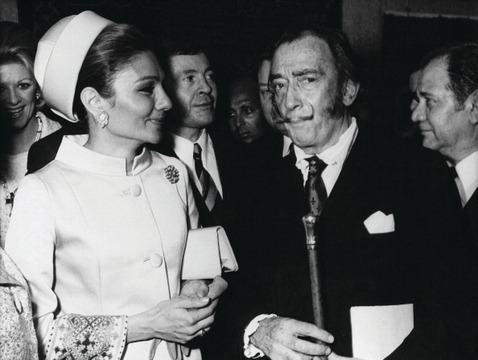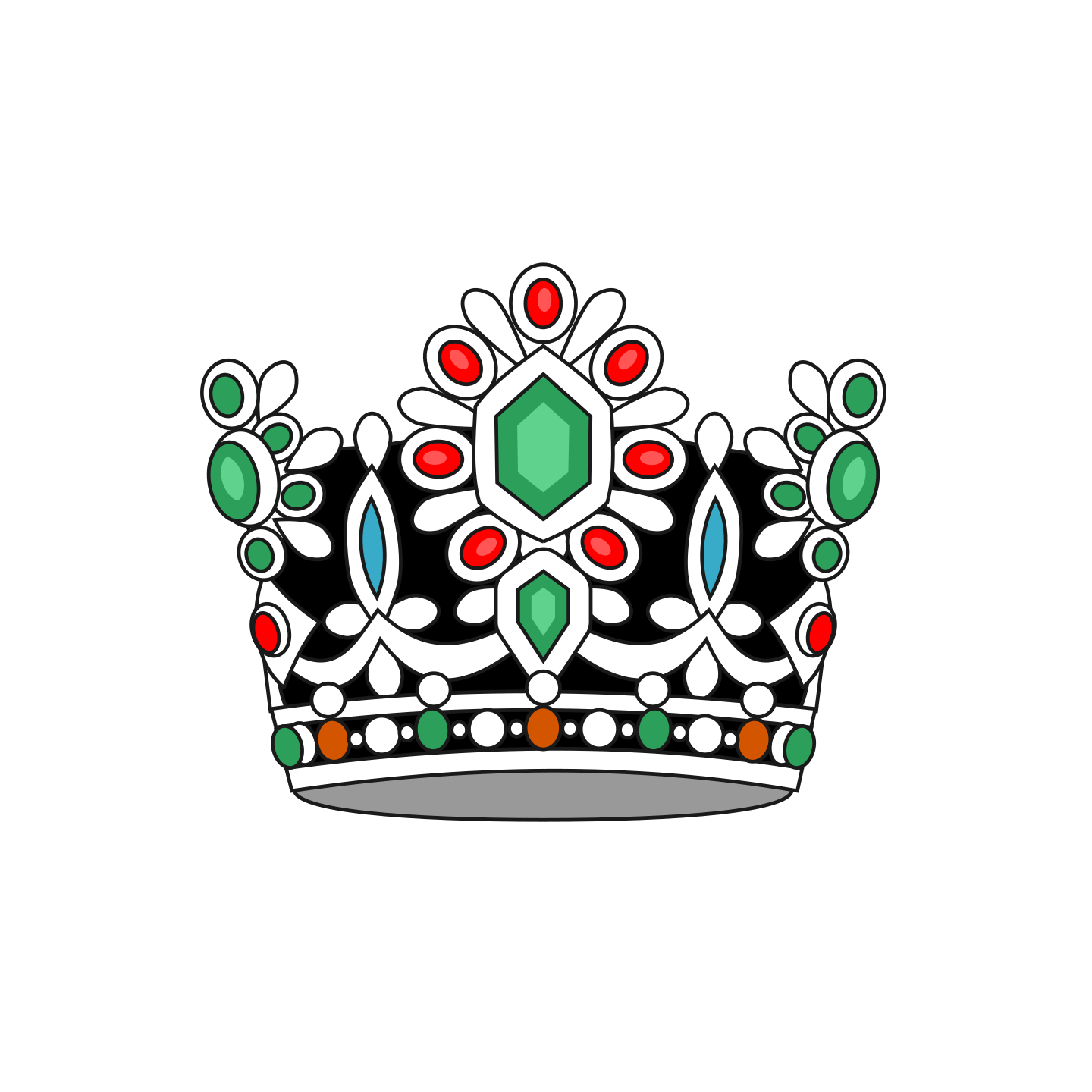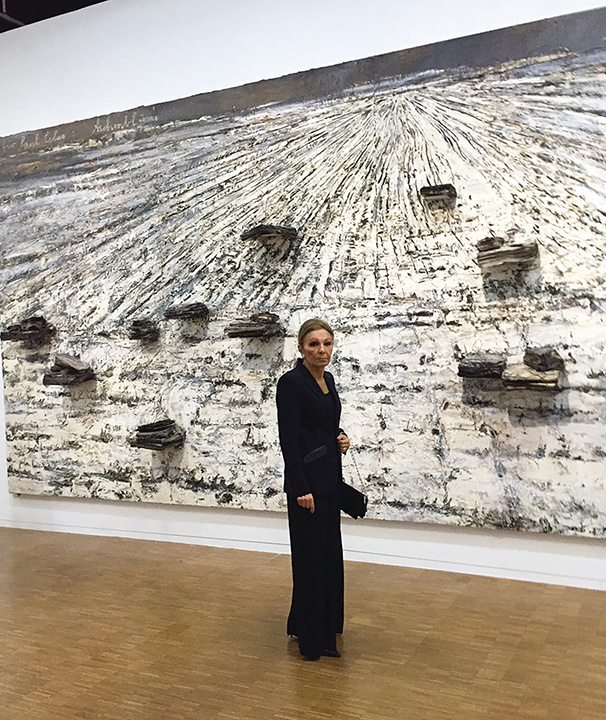Photo: Shahla Dadsetan
As the Tehran Museum of Contemporary Art’s enviable collection prepares to travel to Germany next year, the former empress of Iran reflects on the turbulence her country has faced in recent years—and her contribution to its cultural life.
Thirty-seven years after her husband, Shah Mohammad Reza Pahlavi (1919-80), was deposed and the Islamic Republic of Iran was founded, the former empress Farah Diba Pahlavi is in the news again, as Iran’s celebrated Western collection of Modern art, amassed for the Tehran Museum of Contemporary Art (TMoCA) in the 1970s under her directorship, is unveiled to international eyes. Last November, Germano Celant and Faryar Javaherian curated a retrospective of the work of the Iranian artist Farideh Lashai that was peppered with prized pieces from TMoCA’s collection. The works, including those by Andy Warhol, Francis Bacon, Marc Chagall, Willem de Kooning and Mark Rothko, will travel to the Prussian Cultural Heritage Foundation in Berlin next year, marking the first time that the museum’s collection has left Tehran. Pahlavi, who was responsible for founding numerous cultural institutions and still takes an active interest in Iranian artists, now lives between Washington D.C. and Paris and has not returned to Iran since 1979.
The Art Newspaper: How do you feel about Iran today?
Farah Diba Pahlavi: I feel very sad because I wonder what could have been had the Islamic Revolution not happened. I hear that people are unhappy: they don’t have enough money or enough to eat, women are treated poorly, and children beg in the streets. [There is] prostitution, writers and journalists are jailed, people are hanged for different reasons… the violation of children’s rights and human rights continues in Iran. There are many juveniles on death row, waiting to be hanged, like many before them. I ask myself how Iran, with such a fantastic civilization, could have come to this. But I don’t lose hope because young people are more aware of what has been happening and where Iran could have been—they want to breathe, they want to be free, they want to have a good life. When I think of Iran, I always think of the beautiful places that I visited, the affection and the kindness of the people I met when I traveled all over the country. I don’t live in the past; I live in the present and hope for the future.
Henry Moore showed me a small work… he was so impressed that I knew it was a Miró
In the Niavaran Palace, the royal family’s main residence in Tehran, you had works by Iranian Modernists.
I really wanted them at home, and also to encourage government entities to make similar acquisitions. I wanted to promote our ancient art and culture and also support our artists. It was during a period in which we had the means and it was time to buy art for Iran—for that I’m grateful to my husband as well as [then-prime minister] Amir Abbas Hoveyda, the National Iranian Oil Company, and the [former] Plan and Budget Organization of Iran. We were proud of our history and I wanted our people to share that pride. The world has our beautiful art; we couldn’t afford to have the older art of other countries but we could afford the Modern [art]. The prices then were incomparable to what they are today.
Are you still in touch with Iranian artists?
Sometimes I call them and this makes them happy. Many of the artists have kept sympathy for me and this has encouraged me a lot. They tell me I’m their queen of culture and it makes me happy to know that I’ve been able to do something for my country. It’s difficult to list all the great Modernists—the truth is, there are many of them, like Tanavoli, Mohasses, Iran Darroudi, Monir Farmanfarmaian, Charles Hossein Zenderoudi, Faramarz Pilaram, Leyli Matin-Daftari, and Behjat Sadr.
How was the idea for TMoCA conceived?
I attended an exhibition in Daneshjoo Park in Tehran. Iran Darroudi had mentioned that there should be a place to house the work of Iranian artists and that is where the idea came from. The objective was to have a museum of contemporary Iranian and Western art for our people to be familiar with these art forms. With the help of many, such as Karim Pasha Bahadori, chief of staff of the cabinet, Donna Stein, who worked at MoMA [Museum of Modern Art] in New York, and the curator Fereshteh Daftari, we bought many paintings from New York. Later, Kamran Diba, the museum’s architect, and director, and David Galloway, one of the curators, also bought works.

Photo: Mr. Kambiz Atabai
Shah’s twin sister] and myself after I’d met him in New York. I was very happy to have met Henry Moore in London. He showed me a small piece of work and asked me if I knew who had painted it. I said Miró and he was so impressed that I knew, as he’d asked others and they didn’t know. I met Dalí in Paris and Chagall in the South of France. He was so kind, so human, and down to earth; I couldn’t buy any of his paintings but I bought some lithographs and took three of his brushes, which are in my library in Niavaran [part of the palace complex, which is open to the public]. I met César and had a thumb artwork of his in my library. One day my husband said: “Listen, this doesn’t have a good image in Iran so why don’t you change it?” So I [replaced it with] the first Heech [“nothing”] work by Tanavoli.
You called TMoCA anonymously after the 1994 swap involving de Kooning’s painting Woman III (1952-53) and the Houghton Shahnameh. What compelled you to do so?
That exchange was very sad. I know that the remaining part of the Shahnameh was worth $6m and if the Islamic Republic was that interested, they could have paid this amount. But they exchanged the de Kooning, which was later sold to Steven Cohen for $137.5m.
I called TMoCA saying that I am an art student interested in this museum. I told them that this is cultural and material heritage for our people, [and] please don’t exchange anymore. I’m aware that my portrait by Warhol was cut and that some of Mohasses’s sculptures were destroyed. I hope they won’t sell or exchange anymore and I hope they can buy some more art.
Will you visit Berlin for the TMoCA show?
I definitely will and I will feel very good knowing that this belongs to Iran and Iranians. I’d be so happy to see the collection again.
TMoCA hopes to use ticket sales of the Berlin show to restore the museum and works in the collection. I think that’s a good idea and I hope this happens. I’ve heard that some works aren’t in good condition, particularly the sculptures in the garden. I hope now with everyone talking about this museum, they’ll take care of it.
What are your thoughts on how the lifting of sanctions may affect the Iranian art scene?
I can’t predict, but what’s most important is the condition of the Iranian people. I think Iranians are clever; they will manage to survive. What touches me most is [that], in spite of all the pressure on Iranian artists, the Islamic Republic has not been able to stop their creativity.
Do you still buy art?
Yes, I buy work that I can afford by contemporary Iranian artists from their galleries in London, New York, and Paris. For me, it’s important to be surrounded by Iranian artists; I feel like I live among friends and that gives me energy.



